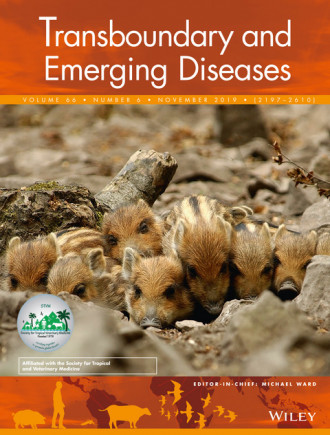Risks from disease caused by Mycobacterium orygis as a consequence of Greater one‐horned Rhinoceros (Rhinoceros unicornis) translocation in Nepal
Abstract:
The greater one‐horned rhinoceros (Rhinoceros unicornis) is listed as vulnerable by the IUCN Red List. Mycobacterium orygis–associated disease was identified in a single greater one‐horned rhino in Chitwan National Park in February 2015 prior to a planned translocation of five greater one‐horned rhinoceros from Chitwan National Park to Bardia National Park for conservation purposes. This paper describes a qualitative disease risk analysis conducted retrospectively post‐translocation for Mycobacterium orygis and this translocation, with the aim to improve the understanding of disease threats to the conservation of greater one‐horned rhino. The disease risk analysis method used was devised by Sainsbury & Vaughan‐Higgins (Conservation Biology, 26, 2017, 442) with modifications by Bobadilla Suarez et al (EcoHealth, 14, 2017, 1) and Rideout et al (EcoHealth, 14, 2017, 42) and included the use of a scenario tree and an analysis of uncertainty as recommended by Murray et al. (Handbook on import risk analysis for animals and animal products. Volume 1. Introduction and qualitative risk analysis, 2004), and the first time this combination of methods has been used to assess the risk from disease in a conservation translocation. The scenario tree and analysis of uncertainty increased the clarity and transparency of the analysis. Rideout et al.’s (EcoHealth, 14, 2017, 42) criteria were used to assess the source hazard and may be useful in comparative assessment of source hazards for future conservation translocations. The likelihood of release into the destination site of Mycobacterium orygis as a source hazard was estimated as of low risk, the risk of exposure of populations at the destination was of high risk and the likelihood of biological and environmental consequences was low. Overall, the risk from disease associated with Mycobacterium orygis as a result of this translocation was found to be low. Recommendations on disease risk management strategies could be improved with a better understanding of the epidemiology including the presence/absence of Mycobacterium orygis in greater one‐horned rhino to develop effective disease risk management strategies.

